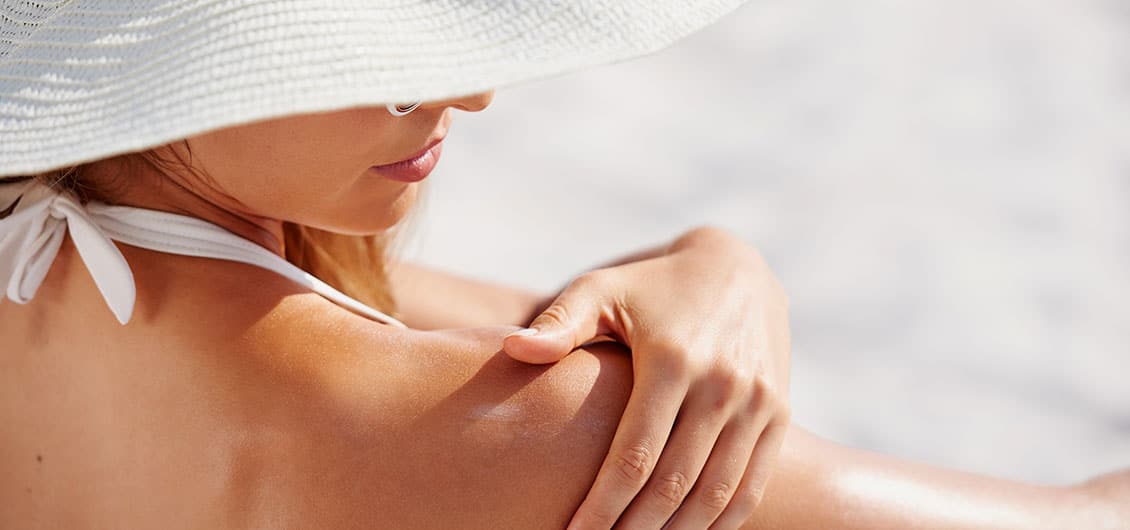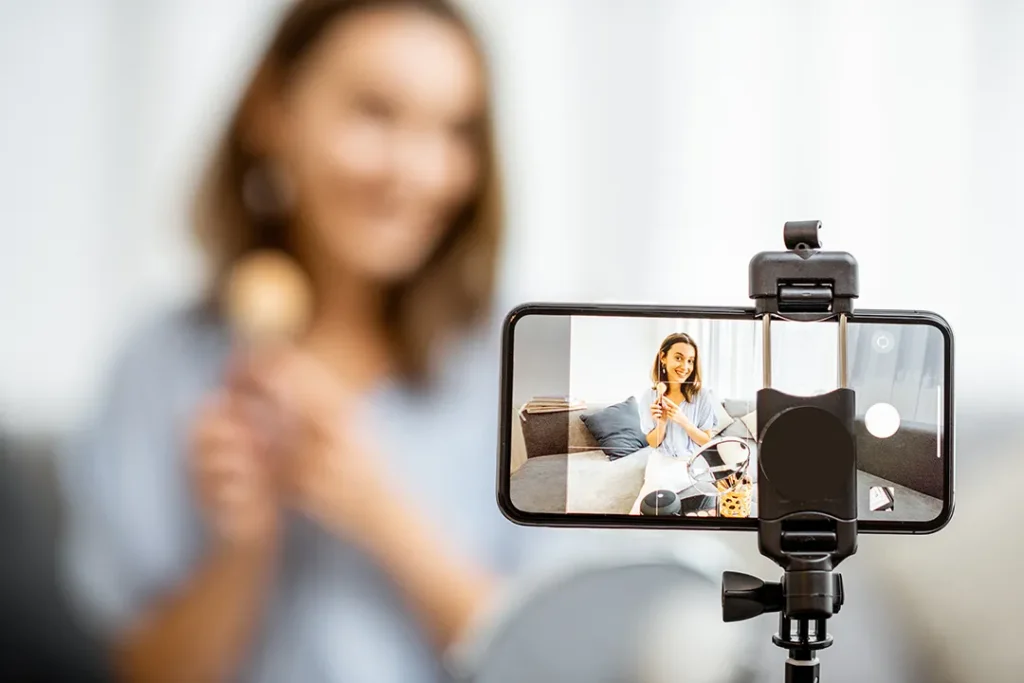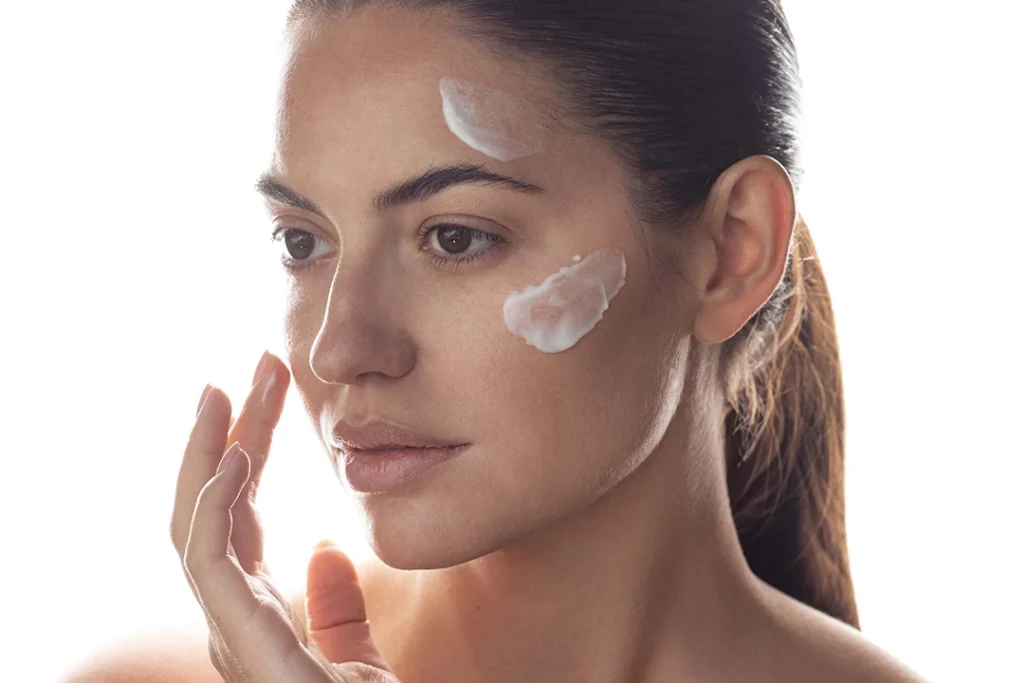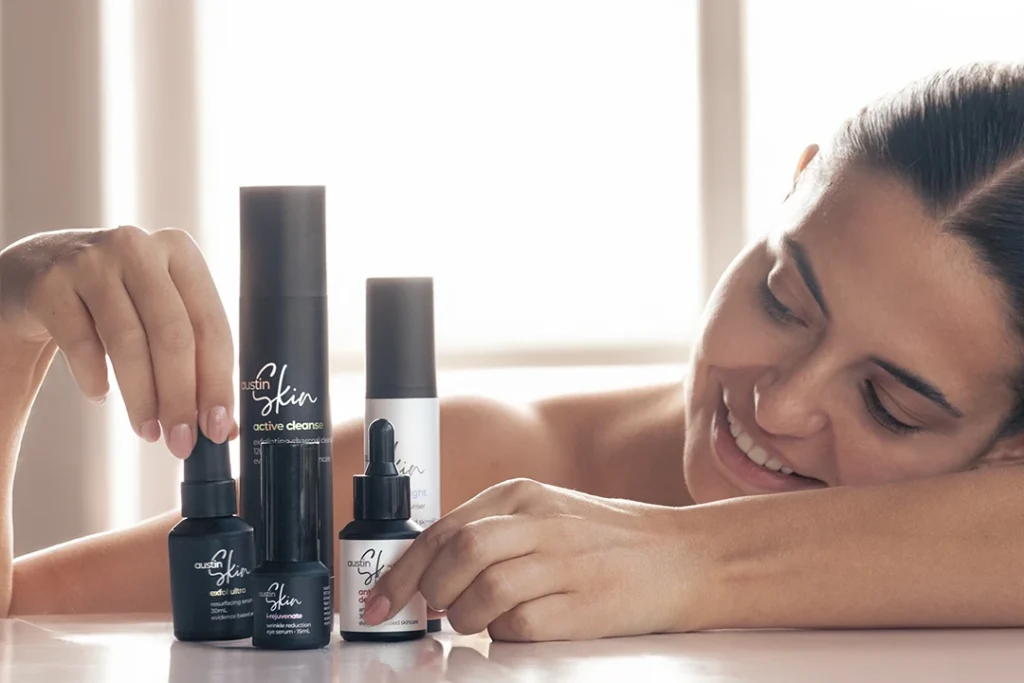Let’s Get This Sunscreen Party Started
A major source of confusion regarding sunscreen is how often it should be applied throughout the day. Before answering that question, however, let’s start with the first application of the day. “Chemical sunscreens need time to create a protective barrier on your skin,” says Dr Austin. How much should you use? The Cancer Council recommends:
- Apply sunscreen 20 minutes before exposure to UV
- Skin should be washed and thoroughly dried before application
- Sunscreen should be applied liberally to all uncovered areas to ensure full coverage
Physical sunscreens, also known as sun blocks, protect your skin as soon as they are applied. There’s no need to wait. “That’s not the only difference between chemical and physical sunscreen protection,” says Dr Austin.
It’s easy to forget about sun protection after you slather up for the first time. It’s easy, but dangerous. “Unless specifically noted, a sunscreen should be reapplied every two hours,” says Dr Austin. Some sunscreens are more water-resistant and can last up to four hours with ‘up to’ being the key phrase. “Even a product that promises four hours of protection needs to be reapplied after swimming,” observes Dr Austin. It should also be reapplied after your towel yourself dry. “Even heavy perspiration can wash away sunscreen, so be sure to reapply after playing sport” she recommends.
Chemical vs. Physical Sunscreens
“Most people have learned to look for a broad-spectrum sunscreen for better UV protection,” notes Dr Austin. “They may not be as familiar with the important distinctions between chemical and physical sunscreens, and what those differences mean to skin health and beauty.”
Chemical sunscreens
- Formulated with man-made chemicals
- Absorb UV rays and change the electromagnetic radiation effect
- Spreads on skin like a lotion and rubs in completely
- The active ingredients in some of these sunscreens can sometimes cause minor irritations on sensitive skin, particularly around the orbital area
Physical sunscreens
- Formulated with natural chemicals such as zinc oxide and titanium dioxide
- Reflect UV rays by forming a protective layer on the skin
- Cause less irritation on sensitive skin than most chemical sunscreens do and less likely to trigger heat-activated skin conditions such as rosacea
- Safe for use on babies and during pregnancy
- Are often used as a base in mineral makeup with SPF
- As these sunscreens sit on the skin to create a block they can have more colour to them than physical sunscreens and often leave a slightly white sheen behind
So which is better? Chemical or Physical? Actually, neither type is better than the other. It comes down to personal preference. As long as you are using good quality UVA/UVB sunscreen and are reapplying it frequently it really doesn’t matter which you pick. However be careful to pick sunscreen with at least SPF30 or above (preferably SPF50) as it will give you the best sun protection and help decrease your chance of skin cancer. It is always best to seek advice before purchasing sunscreen to ensure that you are getting the right sunscreen to suit your lifestyle and skin type.
Austin Clinic has a range of high protection UVA/UVB sunscreens, both physical and chemical as well as our own very high protection UVA/UVB sunscreen. We always scour the market to find the best quality sunscreens so you can be confidant that you are going to be fully protected when you are out and about.
If You Lack Vitamin D, Don’t Blame Your Sunscreen
Australians are notorious for Vitamin D deficiency, which may seem surprising given the abundant amount of sunshine we enjoy. In fact, some of the more common culprits can be:
- A milk allergy
- A vegan diet
These are just two potential causes to Vitamin D deficiency however this does not mean every lactose intolerant person or Vegan is going to be Vitamin D deficient. If you are concerned you might be deficient in Vitamin D it is best to see your doctor and get a blood test to confirm it before changing your diet. If your blood test shows a Vitamin D deficiency, there are other tests your doctor can run to determine the cause. Remember, each human body is unique, no one has the exact chemical makeup that you do so no one will react to environmental, chemical or hormonal triggers in exactly the same way as you do.
So, is there a link between sunscreen and Vitamin D deficiency? No. “Studies have shown that just ten minutes of sun exposure on your bare arm even with sunscreen on is enough to provide adequate Vitamin D to most people,” says Dr Austin. “In other words, don’t use Vitamin D as an excuse to put your skin at risk.”
Austin Clinic Reminder: Sunscreen Saves Lives
The data is clear: sunscreen saves lives. The Cancer Council points to 2015 research published in the Australian and New Zealand Journal of Public Health that found
- Australians prevented more than 1,700 cases of melanoma and 14,000 cases of non-melanoma skin cancer thanks to regular sunscreen use over the previous decade.
Unfortunately, the Council also reports:
- Approximately, two in three Australians will be diagnosed with skin cancer by the time they are 70.
“These statistics are why every Australian should be vigilant about their skin,” says Dr Austin. “A skin cancer check should be at the top of everyone’s list of New Year’s Resolutions.” Please contact us and let us know your concerns so we can do our best to help you be your best.




